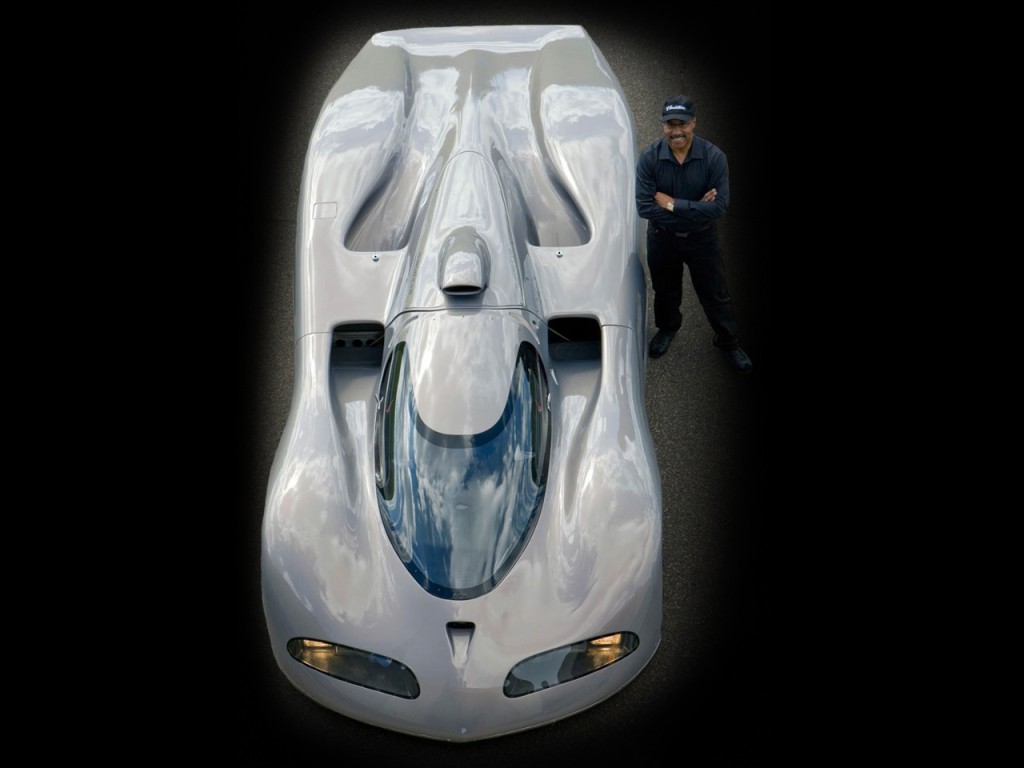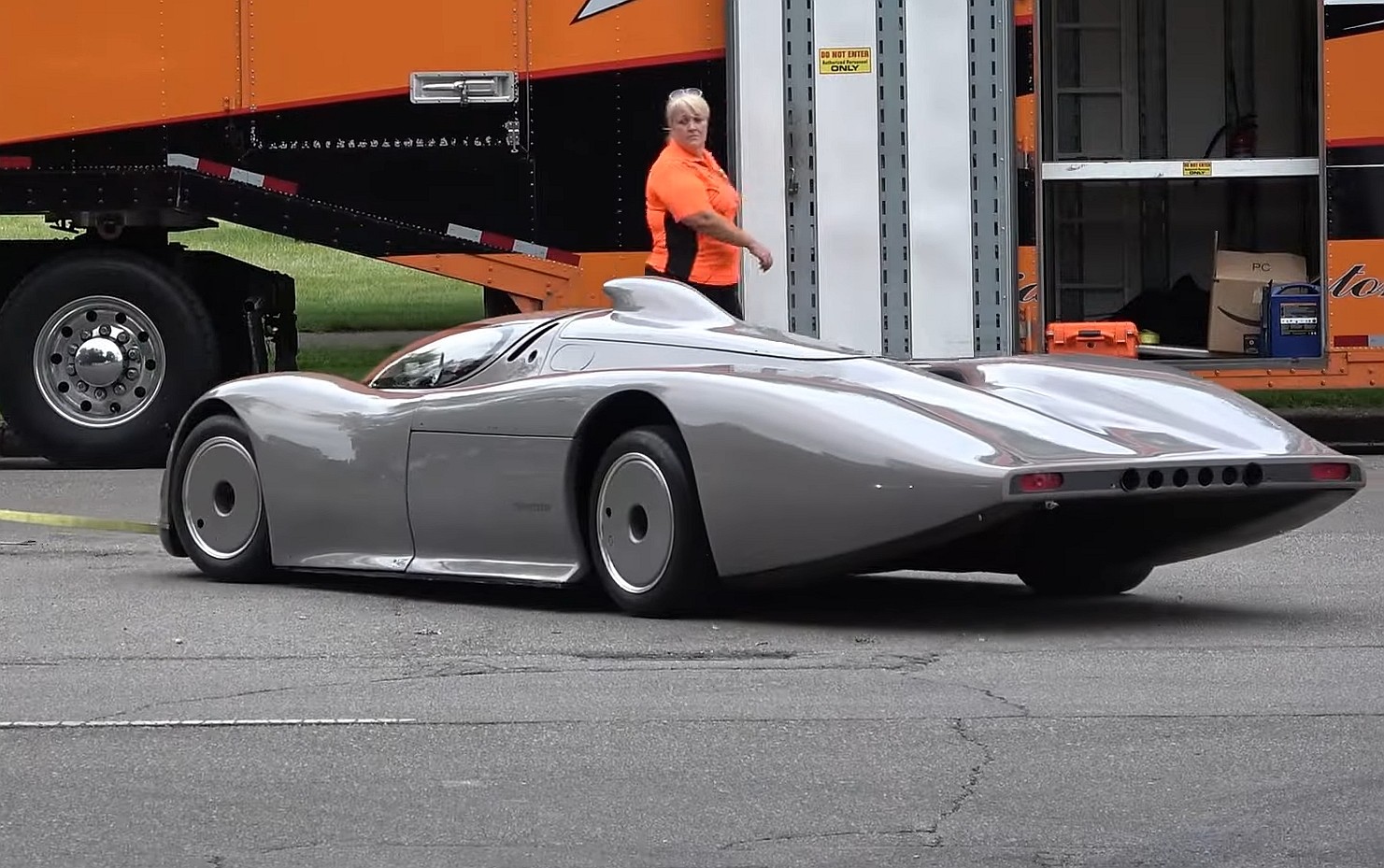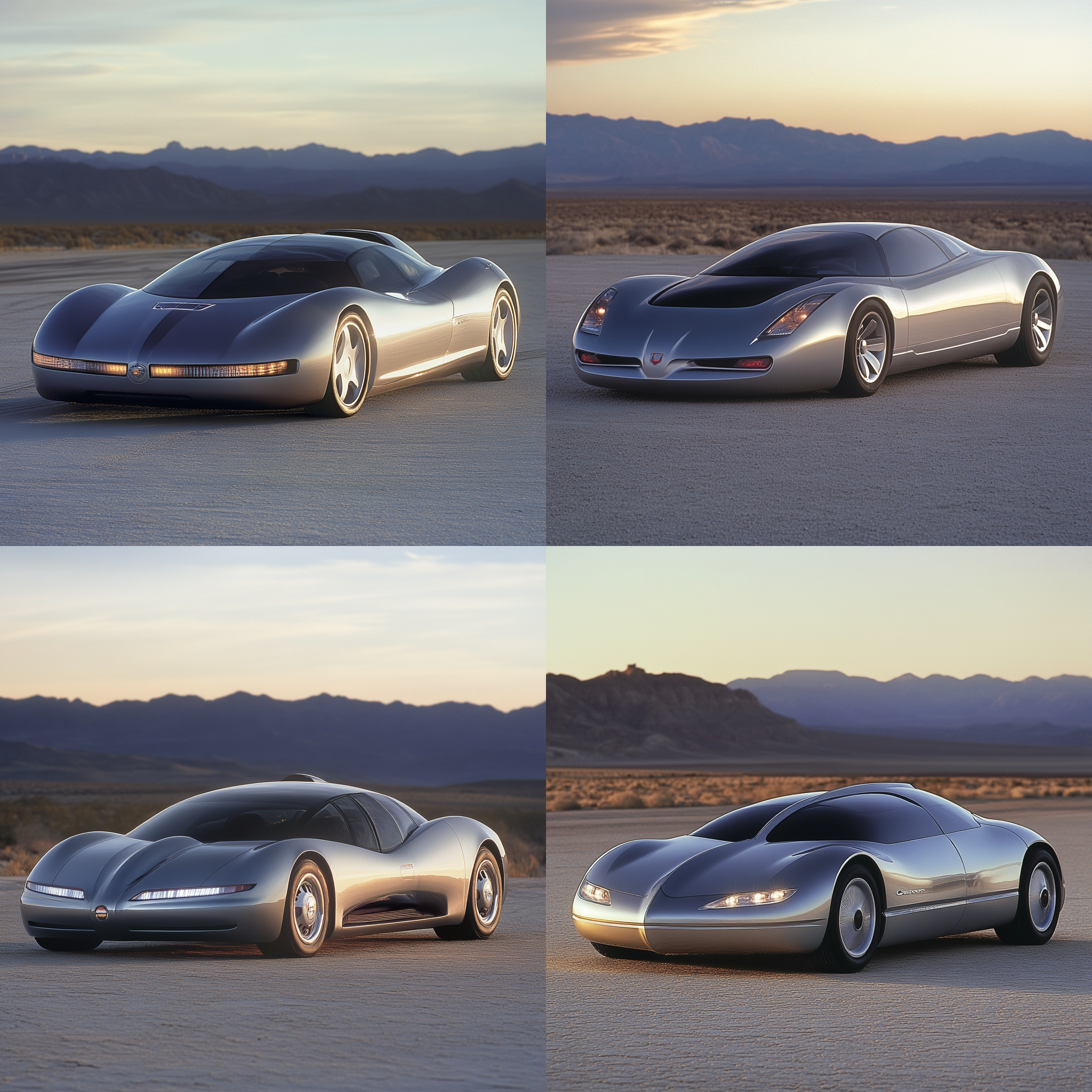
Oldsmobile Aerotech – a concept car presented in 1987, was created to showcase the latest technologies and engineering advancements of Oldsmobile. The car was designed to demonstrate the possibilities of future automotive development, particularly in aerodynamics, materials, and performance. It combined futuristic design with technical solutions aimed at achieving high speeds and efficiency.
Aerotech project was led by chief engineer Don Shepard and senior designer James Phy. Engineers focused on using lightweight alloys and composites, as well as advanced suspension and engine technologies. The main emphasis was on creating an aerodynamic shape to minimize air resistance and ensure stability at high speeds.
The goal of creating Aerotech was not only to demonstrate the brand’s capabilities but also to show what the car of the future might look like. It became a symbol of innovation and General Motors ambition to stay ahead of its time, highlighting its ability to develop groundbreaking solutions in automotive design and technology.
Read too: Mega Track: The Story Behind the Car that Combines Speed and Off-Road Capability

Specification of Oldsmobile Aerotech
1. Power:
In the initial version — over 900 horsepower (2.3-liter Quad 4 Turbo). In later modifications with the V8 Aurora engine — around 650 horsepower.
2. Acceleration:
Exact data for 0-100 km/h acceleration is unavailable, but due to its high power and aerodynamics, it is estimated to be around 3-4 seconds.
3. Top Speed:
Record speed achieved on track was 442 km/h (275 mph).
4. Engine:
Initial engine: 2.3-liter four-cylinder Quad 4 Turbo.
Later versions were equipped with a 4.0-liter V8 Aurora, also used in racing models.
5. Range:
Range wasn’t a focus for this concept, but due to high fuel consumption, actual range was limited (depending on the fuel tank capacity).
6. Dimensions:
Length: approximately 4.6 m.
Width: 2 m.
Height: less than 1 m.
Wheelbase: approximately 2.8 m.
7. Technologies:
Ultra-lightweight construction using carbon fiber and aluminum.
Chassis developed by March Engineering for high-speed stability.
Aerodynamic body with a drag coefficient of Cd ~0.20.
8. Additional Features:
Body modifications: short-tail and long-tail versions.
Concept tested innovative engineering solutions from Oldsmobile, including the Quad 4 engine.
Read too: Chrysler Turbine Car: How one car changed the future of transportation

Intresting facts about Oldsmobile Aerotech:
1. Record-breaking speed:
Oldsmobile Aerotech wasn’t just a futuristic concept; it was also a serious contender for performance records. During its testing phase, it achieved multiple speed records, including setting a closed-course speed record of 257 mph (413 km/h), which made it one of the fastest vehicles in the world at the time.
2. Aerodynamic Design Innovations:
Aerotech was a showcase of advanced aerodynamics. Its design was a collaboration with GM’s Aerodynamics Group, and it featured cutting-edge elements like a low-drag, sculpted body, an integrated rear spoiler, and a sleek, smooth surface that reduced air resistance and improved high-speed stability.
3. Lightweight Construction:
Aerotech was built using lightweight composite materials, including carbon fiber and advanced plastics, reducing its overall weight while maintaining strength and rigidity. This was a key factor in its ability to reach record-breaking speeds.
4. Influence on Future Technologies:
While the Aerotech was never mass-produced, its technologies had a lasting impact on future vehicles, particularly in terms of aerodynamics, engine performance, and materials science. Many of the materials and techniques used in the concept would later influence GM’s production cars.
5. Showcasing GM’s Capability:
Aerotech was designed to demonstrate the engineering prowess of General Motors. It was part of a broader effort to show that GM was capable of pushing the boundaries of automotive design, far beyond what was achievable at the time.
6. Celebrity Endorsement:
The car was widely covered in the media, and even Jay Leno, a well-known automotive enthusiast and host, has expressed admiration for the Aerotech and its role in automotive history.
7. Futuristic Cockpit:
Inside the Aerotech, the cockpit was ahead of its time, featuring digital displays and a streamlined design that minimized distractions. The futuristic interior design helped reinforce the car’s forward-thinking technology.
8. Limited Test Runs:
While the car wasn’t meant for production, it was tested extensively on closed circuits and high-speed tracks. During these tests, the Aerotech helped gather invaluable data on vehicle performance, aerodynamics, and materials, all of which would influence future GM designs.
9. Influence on the Corvette:
Aerotech influenced the development of the Corvette ZR1 and other performance vehicles from GM. The use of lightweight materials and advanced aerodynamics seen in the Aerotech laid the foundation for performance-enhancing technologies that would later be implemented in GM’s most iconic models.

Read too: Mazda Autozam AZ-1: The Japanese phenomenon of the 90s
Conclusion:
Oldsmobile Aerotech became not just a concept car, but an important milestone in the development of automotive technologies. Its unique design and advanced technical solutions not only surpassed the time in which it was created, but also contributed to the implementation of new technologies in mass production. Aerotech served as a sort of laboratory for testing ideas that changed the concept of sports cars: from aerodynamic elements to lightweight composite materials. Moreover, speed records and innovative tests made this car a symbol of ambition and the pursuit of the future, where the limits of possibility became broader, and engineering solutions bolder. Despite never becoming a production model, Aerotech left a significant mark on automotive history, influencing future developments and standards.

Future Classics: 8/10
Brand Recognition: 6/10
Design Modernity: 10/10
CarsCorn Score: 8/10